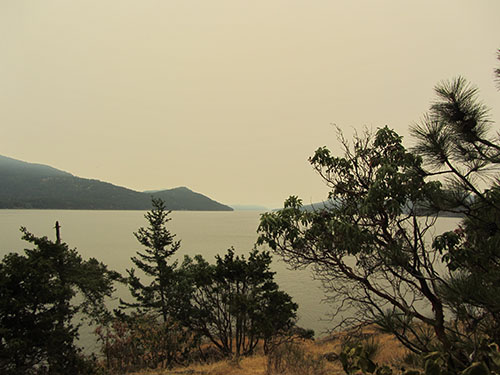They don’t know exactly what they want, but they’ll tell you when you give it to them.
That appears to be the position of the Federal Aviation Administration (FAA) regarding the “Through-the-Fence Arrangements” (TTFA) that have plagued Port Commissioners off and on for years, according to Bea von Tobel, port manager.
The controversy has re-emerged, for the fourth time in eight years.
Again this spring, the FAA is seeking a plan from the Port of Orcas airport as to how they’ll address the rights of abutting property owners to access the airport “through the fence.”
“A federally obligated airport must ensure, to the best of its ability, compatible land use both on and off airport. An airport sponsor will not be successful in defending its airport from incompatible residential development if the sponsor is also allowing residential hangar homes on or next to the airport,” FAA representative Tim Shaw wrote von Tobel in April.
Properties that have deeded access to the airport, regardless of which side of the fence they are on, are all subject to the TTFA rule.
The Port is obligated to the FAA since the agency has awarded over $2,000,000 to the Port since 1991, with the stipulation that a TTFA be presented. If the Port doesn’t come up with a plan, the FAA may deny Airport Improvement Project (AIP) funding.
AIP funding has already been allocated to the Port for future runway overlay in 2012-2013. “If you take the money, then you have to follow FAA rules for the next 20 years,” says von Tobel.
“We need to find a way to satisfy the FAA that doesn’t make unappreciative neighbors,” she says.
But determining what will satisfy the FAA is problematic. The port is required to suggest a plan, but “We don’t know what the through-the-fence agreement is that they want us to support,” says von Tobel.
“All kinds of things have been suggested, and we’re not going to throw ourselves on the fire without knowing if either side will accept it.”
“They don’t know what TTFA they want us to enforce, but they tell us to suggest something ‘or else you haven’t met grant assurances’,” said von Tobel.
Ultimately, the FAA wants to deny access to abutting property owners, she said. Von Tobel has divided opinions on a solution. She points out that abutting property owners pay additional tax dollars for their “special use” land, but adds that the full levy rate of .03127 per $1,000 property value for all 31 parcels combined generates a total of $537.96 per year.
And the port only collects around 40% of that rate, von Tobel says; “We figure that’s enough to run the airport.”
The issue of a plan to deal with adjoining property owners is not going away, and the Port wants it settled for once and for all, says von Tobel.






